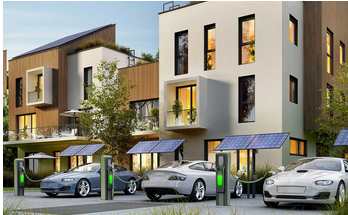Electric vehicles produce 30-40 percent more emissions in the production process than petrol-based equivalents. With great performance in freezing temperatures and faster charging and discharging capabilities – hard carbon from Lignode and Stora Enso is in the new frontier in producing green batteries. Check out how it’s done in practice!
Storing lithium-ions in the anode part of the battery can now be done in new and environmentally friendly ways. As lithium-ions move from cathode to anode during charging, they are stored in the carbon structure of the anode material. Traditionally graphite is used, and that material is strictly layered – the ions can only enter and exit from the sides of the graphite. With hard carbon made from Lignode the anode material is disorganized, becoming a highly open structure which makes faster charging and discharging possible. Hence, the time spent at charging points can be reduced giving Lignode the potential to act as a differentiator for EV manufacturers and battery suppliers alike.
The open structure of hard carbon has also another great benefit: It improves performance at lower temperatures. Deteriorated battery performance in freezing conditions has been a common complaint from electric car owners for a long while and hard carbon has the potential of addressing this issue. The improved performance at lower temperatures comes with another advantage – it makes cold car batteries less of a safety risk.
The very reason for car batteries to exist is to lead the journey towards zero CO2-emissions in transportation. It is therefore crucial that the battery production itself has a low carbon footprint. Lignode is made from lignin which makes up between 20-30 percent of trees, acting as a binding agent that gives wood stiffness and prevents rotting. It is extracted as a by-product of cellulose fiber production - a bio-based and scalable production currently from Stora Enso’s Sunila Mill in Kotka, Finland. This means that new trees do not need to be harvested, it's more about making full use of existing material. Trees are moreover a traceable raw material that can be sourced from certified forests and refined in a process with a low carbon footprint. Natural graphite on the contrary is mined from beneath the ground. It is a finite source and is not locally sourced in every part of the world making it a non-renewable source that often needs long distance shipping.
China controls about 84 percent of the global supply of natural graphite and working conditions at graphite mining sites are, in many parts of the world, very poor making it a dirty business both for humans and the environment. Synthetic graphite is made from petroleum- and coal-derived coke and pitch at very high temperatures. It is a fossil-based material obtained during an energy-intensive process creating a rather high carbon footprint in the battery production process.
“Lignin is renewable, traceable and millions of tonnes of it are already being produced in Europe which makes the production of hard carbon scalable and possible to perform in the vicinity of emerging battery factories”, says Lauri Lehtonen.
www.storaenso.com


 Deutsch (Germany)
Deutsch (Germany)  Polski (PL)
Polski (PL) 













































